Last updated: June 23, 2023
Article
Restoring the Assembly Room
"The best break Independence Hall and the NPS ever had was to benefit from the research and scholarship of its best historical, archeological, and architectural investigators. [Preservationists] Lee Nelson and Penelope Hartshorne are tops in their field."
-John Cotter, National Park Service Archeologist
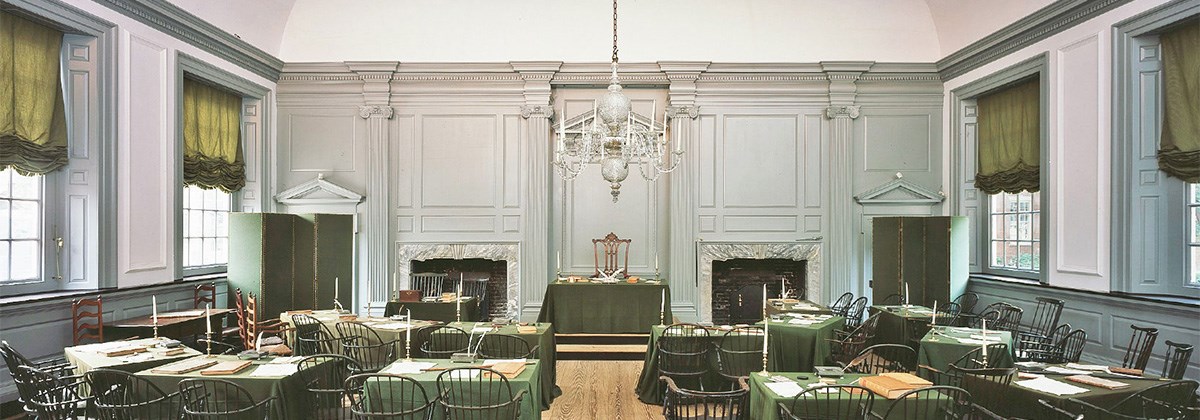
NPS photo
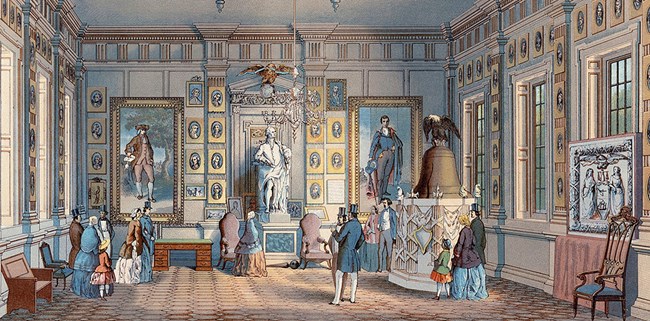
NPS photo
Early Changes in the Assembly Room
By the 1850s, the Assembly Room bore little resemblance to what Benjamin Franklin or George Washington would have seen. Each succeeding generation of Americans seemed to have a different idea about what the room should look like. The furnishings, wood paneling, and paint colors were all changed. City officials decorated the walls with portraits of the Founding generation and filled the room with relics of the nation's Revolutionary past—including the cracked Liberty Bell. Additional changes in the 1870s and 1890s altered the space even further.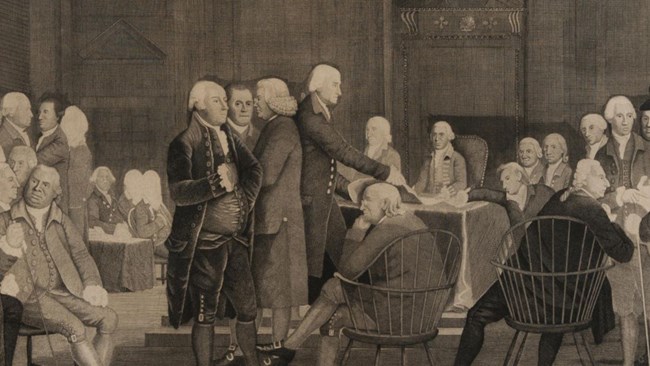
NPS photo
Furnishing the Room
When Independence National Historical Park was established in 1948, one of the first goals of the National Park Service was to restore the Assembly Room to its appearance during the American Revolution. What items were in the room during the Second Continental Congress? What would delegates to the Constitutional Convention have seen?
Historians relied on primary sources—letters, diaries, receipts, and books—to furnish the room. These resources, along with the 1780s painting "Congress Voting Independence" revealed key details of items used in the Assembly Room. By the summer of 1955, the preliminary furnishing of the Assembly Room was completed, but the architectural work had just begun.
Historians relied on primary sources—letters, diaries, receipts, and books—to furnish the room. These resources, along with the 1780s painting "Congress Voting Independence" revealed key details of items used in the Assembly Room. By the summer of 1955, the preliminary furnishing of the Assembly Room was completed, but the architectural work had just begun.
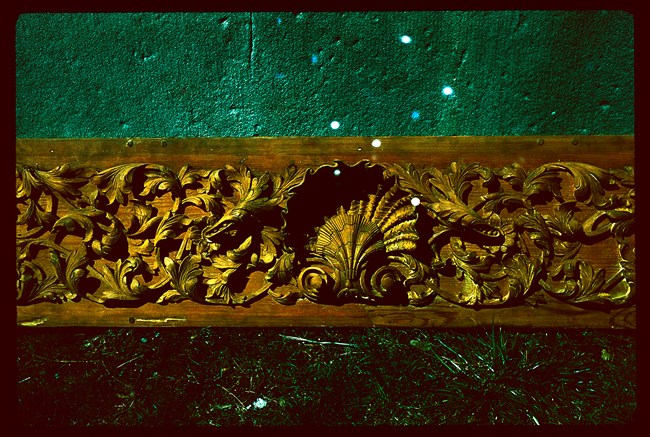
NPS photo
Uncovering the Details
Preservationists painstakingly investigated every detail of the architecture of the Assembly Room. They scraped away decades of paint to determine the original colors and reveal architectural details. They examined nails (wrought iron nails indicated 18th century work). Eventually they stripped the room of all its wooden paneling, exposing the original 1730s brick walls. This diligent work allowed the preservationists to ascertain critical information and uncover hidden details such as:- the original cockleshell frieze carving—this was the last remaining piece of original woodwork on the walls of the Assembly Room. Fragments of paint from the carving revealed the original paint color of the east wall of the room.
- The original ceiling structure (minus the plaster).
- The original location, shapes, and dimensions of the window, door, and fireplace openings.
- The discovery of nailing blocks on the original brick walls helped determine the original width of the wood paneling.
- The discovery of three original floor joists. Nail patterns on the joists revealed the original width of the floorboards.
- The discovery of a single wooden dentil from the original cornice, which provided the dimensions needed to restore the cornice and its original appearance.
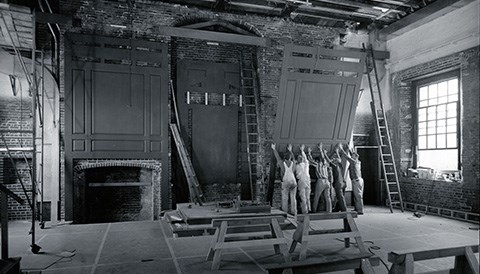
NPS photo
